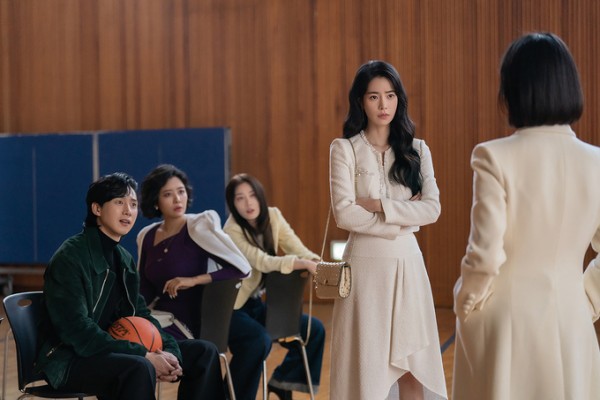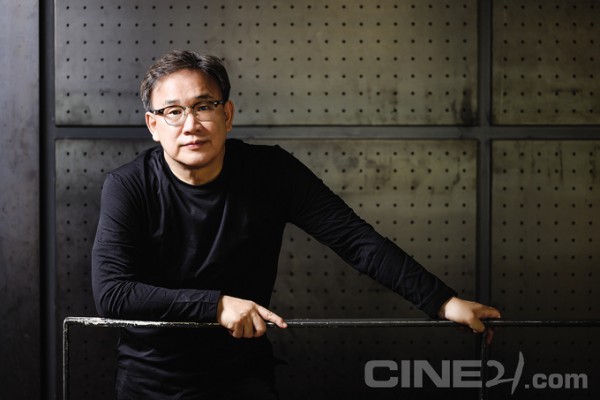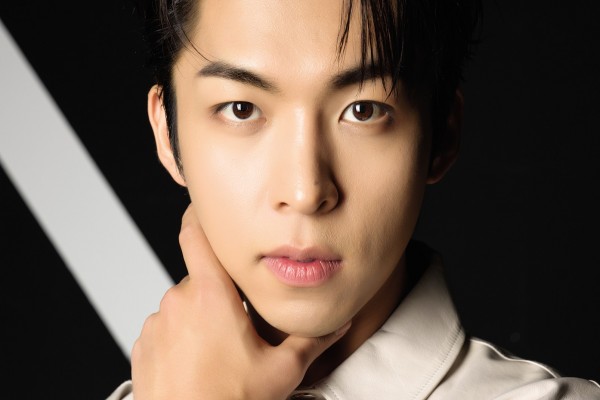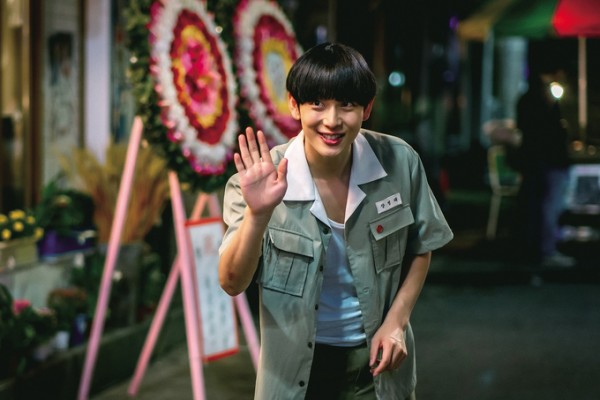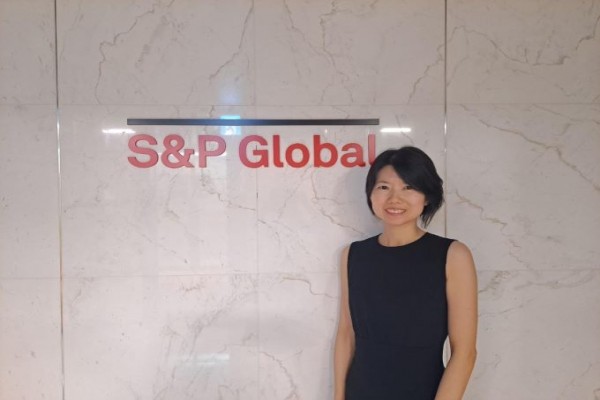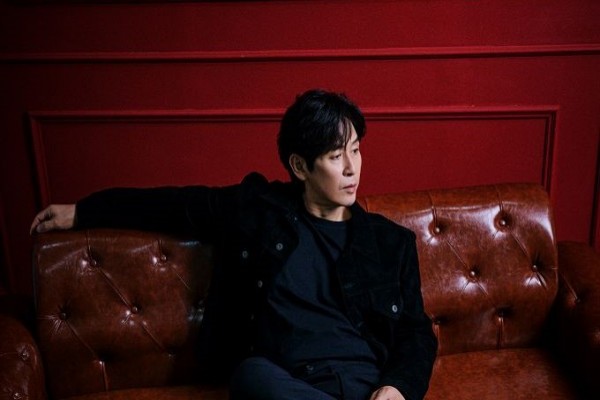130, Suyeonggangbyeon-daero,
Haeundae-gu, Busan, Republic of Korea,
48058
PENINSULA Art Director, "I gave it the impression of a deserted city"
Aug 04, 2020
- Writerby KIM Su-bin
- View2633
“I composed the image of a city that has been left deserted but not destroyed.”





TRAIN TO BUSAN (2016) and Peninsula come from the same root, but the visual appeals they convey are pretty different. If the former focused on the ‘realistic representation’ of the interior of a KTX train, the spaces in Peninsula are created as a vision of a ruined city. Art Director LEE Mok-won, who was in charge of production design for the two films, has built over the years a wide-ranging body of works. From the realistic apartment of the protagonist in Birthday (2019) to the seven outlandish tableaux of hell in the Along With The Gods series, they all emerged from the mind of LEE Mok-won. This week, we talk about the production design of Peninsula with Art Director LEE Mok-won, whose films all share a universe grounded in reality even though the concepts for each movie couldn’t be more different.
This film is set 4 years after the events of TRAIN TO BUSAN. How do you translate to the screen such a passage of time?
In foreign films, images of destroyed cities are generally used to express dystopia. For Peninsula, we approached this with a slightly different angle. Here, it hovers closer to the idea of ‘neglect’ than that of ‘destruction’. We designed the city by establishing the principle that it was the natural environment that had been transforming the deserted city. We postulated that typhoons, heavy rains and droughts must have stricken Seoul over the four years it has been left completely abandoned after TRAIN TO BUSAN (2016). This is how we came up with the roads covered with dirt you can see during the car chase scenes, or the swamped underground parking lot as a result of a flood, as well as the structures of the Han River that have been drifting. The concept behind the art direction of this film was to show the natural damages caused by the desertion of the city, rather than the destructions as a direct consequence of something specific.
Unlike TRAIN TO BUSAN, in which the interior of a train was the main location, there is a larger number of places featured in the sequel, such as the back streets of Hong Kong, downtown Seoul, the port of Incheon, and the interior of a passenger ship. What did you have in mind in regard to the art direction of the locales for Peninsula?
Personally, I think that the fundamental element when representing a post-apocalyptic world is to transform places we are familiar with. I think that what allowed for the audience to naturally relate to the premise of a “zombie outbreak” in TRAIN TO BUSAN (2016) was the realistic reproduction of a high-speed KTX train, which is really familiar to the Korean audience. I didn't want to use fictional spaces; I wanted to reproduce familiar places as much as possible. So the locations that show up in the film are the Guro Digital Complex, the Omok Bridge (both in Southwest Seoul), and a shopping mall in ruins.

I wonder, is there any work that you used as a touchstone or reference?
I have watched a lot of post-apocalyptic films made overseas. In order to achieve an image that is more of desertion than destruction, I actually got a lot of ideas from visiting with Google Earth spaces that have been abandoned for a long time due to unusual circumstances, like the whole Fukushima area and the Chernobyl region, where these regrettable events occurred.
These ideas stand out in the conception of the background for the hideout of Unit 631, for instance, the fact they settled down in a large supermarket and that they are using a city bus as a warehouse.
Director YEON Sang-ho showed me pictures of a derelict shopping mall in Bangkok and suggested setting the film inside such a shopping mall. It was a picture of a shopping mall that was under water, because the rain was leaking through the damaged ceiling, and fishes were living there. The feeling of an unbalanced combination of the water and the fishes with an extremely artificial space was refreshing. So we settled on the abandoned shopping mall as location, and the first thing I asked the production company was to ask for the authorizations to use as many real-life shop names as possible. We put up signboards of Coffee Bean, Bandi & Lunis bookstores, Krispy Kreme Doughnuts, and TGI Fridays family restaurants, brands that we know so well, and we paid attention to deliberately expose these places as deserted. We hoped things like that would help the audience to be immersed in the narrative, even if it’s in a small way.

Unlike Unit 631, Min-jung and her family are characters with humanity, and it seems that you tried to suggest this difference in their environments as well.
The interior spaces where Unit 631 is based were designed to be cold places, based on artificial lighting and with barely any natural light. On the other hand, we depicted the hideout of Minjung’s family as a space that still retains some warmth of a family home, even though it isn’t much, and we did so by having the space get natural light despite it being also in ruins, and by choosing light temperatures associated to warm colors rather than cold ones.
Have you tried to give this film a visual continuity with TRAIN TO BUSAN?
In TRAIN TO BUSAN (2016), we were given the unique situation of, ‘There are zombies in a KTX train.’ Since the setup, the zombie outbreak, was unrealistic, we tried to make the spaces look realistic. I did my best to build a KTX set that looks like the real thing. In this area, we had a little more freedom for Peninsula since it depicts the situation following TRAIN TO BUSAN (2016). We were able to utilize a more cinematic touch. Rather than giving it a visual continuity, I tried to approach this sequel in a different way.

Peninsula is also a car chase movie. Could you tell us more about the aspects you took into consideration to design the cars?
The concept for Juni’s car, as the director requested, was that it had to be a vehicle that would feel unlikely to be driven by a young girl. It had to be a SUV because it would have to handle rough terrain. In addition, we thought a very large vehicle would be adequate to provide a unique feeling when LEE Re, an actor with a small body frame, is driving. The one car that naturally came to mind was the Kia Mojave (known as Borrego in North America and China), the vehicle of middle-aged wannabes. As for the greedy Unit 631, we initially thought they would be able to find and drive expensive foreign cars that had been left behind by their owners, but we compromised on the realism and decided to go with the vehicles that can now be seen in the movie. We visited junkyards in person and gathered visual data on the feel of old vehicles. Furthermore, we purchased actual second-hand vehicles and altered them, with things such as dust and rust, based on the data collected from the junkyards.
Is there anything else you would like to share with us about the art direction of Peninsula?
You can see in the movie that there is a flooded main hall inside the shopping mall where the troops of Unit 631 reside. This is a real indoor set we built and filmed, and I think it has been filled with about 20 tons of water in total. Since the actors had to come into contact with the water while filming their scenes, we tried to keep it clean. So every day, once the last take for that day was done, we refilled the set with 20 tons of water, and in order to represent filthy water we dissolved edible pigments into the water and gave it the colors putrid water covered with moss usually has.
The “fortress infiltration path” that has been obstructed by a landslide is the space I was personally craving for. Filming that scene cost quite a lot of money compared to its length. Showing the parking lot of the shopping mall once over the course of the infiltration into the fortress by Jung-seok’s party seemed to be helpful for the mise-en-scene of the narrative. Cars were placed in the basement of an abandoned shopping mall in Paju and we established the setting by actually pouring 50 tons of mud. It was a pretty tough job.
What would you like to do in the future? Is there any rule you would like to keep observing in your work as an art director?
When I started working in the art department, I was asked what was most important to an art director. My answer back then was a discerning eye. The answer pleased the person who asked me the question so much, it led me to start working in this field. My opinion is still the same today. Discernment and observation are the most important abilities for an art director. Coming up with concepts that can resonate with both the people who are going to work on it and the audience is always difficult, but fun too. Currently, I am filming a work called Emergency Declaration directed by HAN Jae-rim. This time, we are filming in a complete replica of a large passenger plane that we had to build. Since I have now built trains, ships, and airplanes, I might want to give spaceships a try next time.














